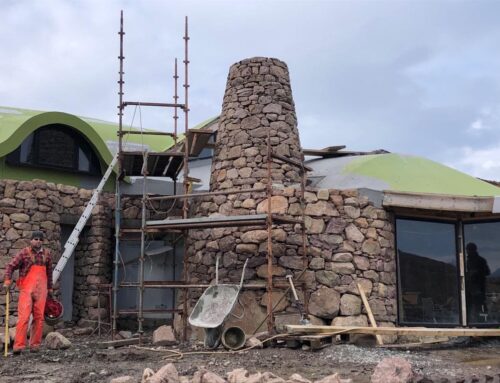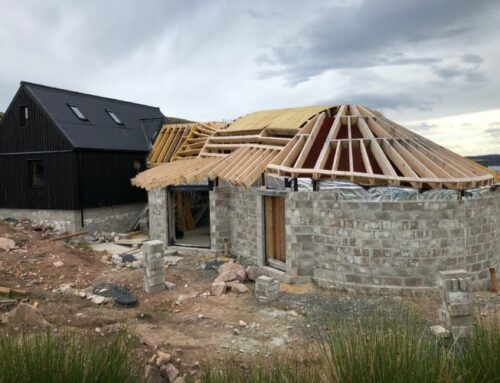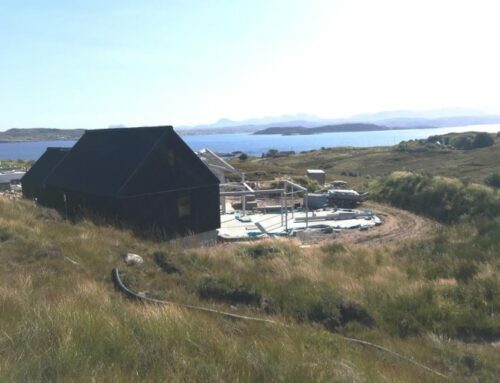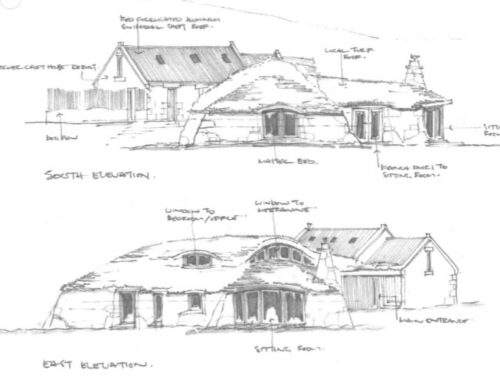Louis Croft was always going to be a sustainable, responsible build: you don’t work with Stuart Bagshaw otherwise, and you certainly don’t try and get planning permission in a protected area of the Highlands if you’ve a high-impact house in mind.
Naturally our ultimate dream is a passive home: low on environmental pressure, costs and maintenance. But it’s fair to say the rest of the world isn’t entirely caught-up with that idea, so right from the start we committed to offset as much as we could through recycling original material; using local resources and labour; living on-site to reduce transport and increase efficiency, and even repurposing stuff we’d had lying around for years, just waiting for its chance to shine.
- We built Louis Croft’s road from crushed and fractured Torridon sandstone dug out during the long, slow process of accessing the original Black House.
- The first survey established the ruined croft wasn’t fit for restoration, so we carefully dismantled it, stored the original stone and incorporated into the design of the new house.
- Our groundworks were reliably messy, but even in the depths of mud-bound misery we were savvy enough to save the peat, stone and rubble dug up, for later use, and very handy it proved too.
- The rear corner of Louis Croft is built almost entirely out of stone repurposed from the original 18th century Black House.
- The biggest stone lintel in the croft is actually a massive piece of granite we’d had tucked away in the Strathearn warehouse for over a decade, just in case. It’s not Torridon sandstone, but by some happy chance, it’s almost exactly the same colour. It was clearly meant to be.
- We opted to manufacture the croft windows from durable, stable and sustainable Accoya (acetylated plantation pine) which, when painted black, also absorbs solar gain and shouldn’t require repainting or maintenance for a number of years.
- A customised timber frame for the croft was constructed by Strathearn in our Perth workshop. Which is not as counter-intuitive as it seems from a responsible build angle, since it allowed us to put an extra 50mm depth in the frame for insulation, bringing Louis one step closer to the passive house ideal.
Whats up next: Louis Croft comes out of the ground






